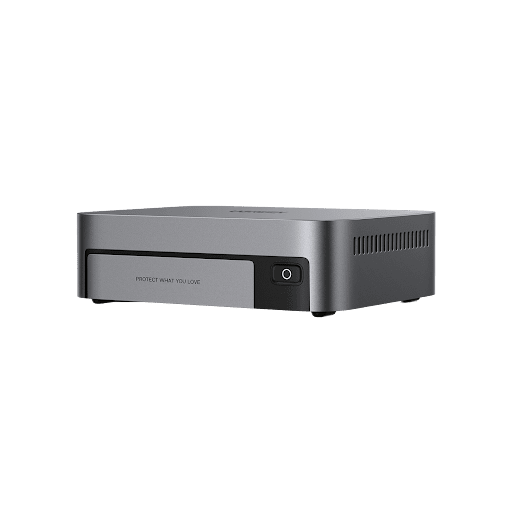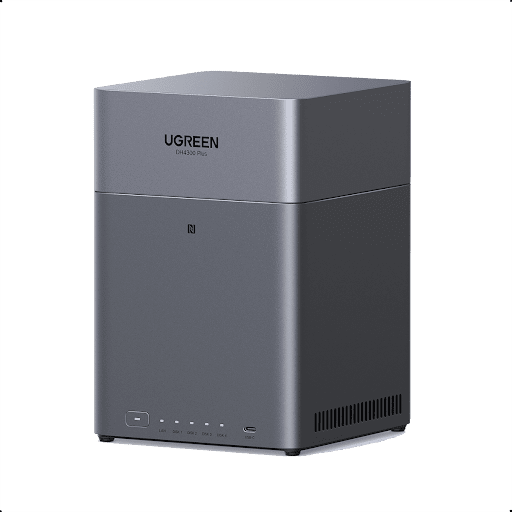Your company’s data keeps growing, but your Network Attached Storage (NAS) system be struggling to keep up. When files load slowly, backups take forever, or multiple people can’t access documents at the same time, it hurts productivity across your entire team. These slowdowns happen for common reasons – network traffic jams, aging hard drives, or simply too many people trying to use the system at once.
Many businesses consider moving everything to the cloud, but NAS storage gives you something cloud services can’t: complete control over your data and consistent performance. This guide walks you through practical ways to speed up your NAS storage system. From upgrading the right components to adjusting key settings, you’ll learn how to make your storage fast and reliable, whether you’re running a small office or managing a large company’s data.
Understanding NAS Storage Fundamentals
Network Attached Storage (NAS) represents a dedicated file-level storage architecture that connects directly to computer networks, providing centralized data access to multiple users and devices. Unlike Storage Area Networks (SAN) which offer block-level storage or Direct Attached Storage (DAS) connected to single servers, NAS systems excel in file sharing and collaboration scenarios. The core components include specialized hardware with multiple drive bays, network interfaces, and an operating system optimized for file services. Modern solutions like UGREEN’s NAS systems particularly benefit enterprises through simplified data management, built-in redundancy, and unified access control. Common applications include document sharing, multimedia streaming, backup repositories, and virtual machine storage. For optimal performance, organizations should ensure robust network infrastructure, implement appropriate authentication mechanisms, and maintain adequate power and cooling systems. The scalability and flexibility of NAS make it ideal for growing businesses requiring reliable, centralized storage without the complexity of traditional enterprise storage systems.

Cloud vs NAS Storage: Performance Decision Guide
When comparing cloud storage with NAS solutions, latency emerges as a critical differentiator. On-premises NAS systems typically deliver sub-millisecond response times for local operations, while cloud storage latency can vary significantly based on internet connectivity and geographic distance to data centers. For organizations handling large data volumes, the total cost of ownership calculation becomes complex. While cloud storage offers flexible pay-as-you-go pricing, NAS solutions often prove more economical for predictable, high-capacity workloads over three to five years. Security considerations heavily favor NAS for organizations requiring complete control over data access and encryption protocols. Data sovereignty requirements, particularly in regulated industries or regions with strict data residency laws, may necessitate on-premises NAS deployment. However, hybrid approaches combining NAS for backup and disaster recovery are gaining traction. IT professionals should evaluate workload characteristics, compliance requirements, bandwidth costs, and performance SLAs when choosing between cloud and NAS implementations. The decision framework should prioritize application response time requirements, data access patterns, and long-term scalability needs while considering the organization’s technical expertise in managing storage infrastructure.
Performance Enhancement Strategies
Hardware Optimization Techniques
Optimizing NAS hardware begins with strategic drive selection. Enterprise-grade SSDs deliver superior IOPS and lower latency compared to HDDs, making them ideal for frequently accessed data and cache operations. For cost-effective capacity, implement tiered storage using SSDs for hot data and HDDs for cold storage. RAID configurations should balance performance with redundancy – RAID 10 offers optimal speed for write-intensive workloads, while RAID 6 provides better data protection for larger arrays. Memory requirements typically start at 8GB RAM per storage pool, scaling up based on deduplication needs and concurrent user loads. For processor selection, multi-core CPUs with high clock speeds support parallel operations effectively, especially during intensive encryption or compression tasks. Network interface bonding through LACP or round-robin configurations can significantly boost throughput, particularly when serving multiple high-bandwidth clients.

Network Configuration Best Practices
Establishing dedicated VLANs for storage traffic isolates NAS operations from general network congestion, ensuring consistent performance. Enable jumbo frames with 9000 MTU on both NAS and client devices to reduce protocol overhead and improve throughput for large file transfers. Deploy enterprise-grade switches supporting link aggregation and ensure uniform configuration across all connected ports. Implement QoS policies to prioritize critical storage traffic during peak loads. For distributed environments, maintain network segments within 100-meter cable length limits or employ fiber connections for extended distances. Regular network baseline testing helps identify potential bottlenecks before they impact production workloads.
Software-Level Tuning
Effective software optimization starts with intelligent cache management. Configure RAM-based read cache for frequently accessed files and SSD-based write cache to buffer incoming data. Select file systems based on workload patterns – ext4 excels in general-purpose scenarios, while ZFS offers advanced features like inline compression and checksumming. Enable compression for text-based data while avoiding it for already-compressed formats like videos or images. Adjust deduplication settings based on data redundancy levels, considering the CPU and memory overhead. Fine-tune concurrent access limits based on user patterns – start with 128 simultaneous connections per network interface and adjust based on monitoring results. Schedule maintenance operations like integrity checks and snapshot creation during off-peak hours. Implement progressive file locking mechanisms to balance data consistency with access speed. Regular performance benchmarking helps validate optimization efforts and identifies areas requiring further tuning.
Implementing Real-Time Support Systems
Effective NAS performance management requires comprehensive monitoring and support infrastructure. Modern monitoring tools should track key metrics including IOPS, throughput, latency, and disk utilization in real-time. Configure alert thresholds based on historical performance patterns, setting warning levels at 80% resource utilization and critical alerts at 90%. Essential monitoring parameters include network interface statistics, CPU load, memory usage, and storage pool health status. Remote diagnostics capabilities should encompass automated log analysis, SNMP monitoring, and secure remote access for troubleshooting. When establishing vendor support agreements, prioritize response time SLAs for critical issues and ensure 24/7 technical assistance availability. Integration with IT service management platforms enables automated ticket creation and escalation workflows based on severity levels. Implement automated reporting systems generating daily performance summaries, capacity trending reports, and monthly SLA compliance documentation. Regular system health checks should validate backup completion status, RAID integrity, and firmware update requirements. This proactive approach to system monitoring helps prevent performance degradation while maintaining optimal storage operations.
Scaling Storage Capacity Efficiently
Effective storage scaling requires a strategic approach to data tiering and capacity management. Implementing automated storage tiering moves frequently accessed data to high-performance drives while relegating cold data to cost-effective storage media. When integrating expansion units, maintain consistent performance by distributing workloads evenly across storage pools and ensuring balanced network connectivity. Capacity planning should incorporate growth projections using predictive analytics, typically forecasting 18-24 months ahead while maintaining 20% headroom for unexpected spikes. Thin provisioning optimizes space utilization by allocating storage on-demand rather than pre-allocating full volumes, though careful monitoring prevents overprovisioning risks. Data lifecycle management policies should automatically migrate aging data to lower-cost tiers based on access patterns and retention requirements. For future-proofing, select NAS platforms supporting non-disruptive upgrades, multiple expansion options, and emerging storage technologies like NVMe over Fabric. Consider modular architectures that allow incremental scaling without requiring complete system replacement, ensuring investment protection while maintaining performance consistency across storage tiers.
Optimizing Enterprise Storage: The Future of NAS Performance
Optimizing NAS storage performance requires a comprehensive approach encompassing hardware, network, and software considerations. The strategies outlined demonstrate how organizations can achieve superior data access speeds while maintaining control over their storage infrastructure. While cloud solutions offer flexibility, NAS systems remain indispensable for latency-sensitive operations and compliance-driven environments. Success in NAS optimization depends on careful attention to drive selection, network configuration, and ongoing performance monitoring. Organizations should begin by implementing basic optimizations like proper RAID configurations and network segregation, then progressively advance to more sophisticated techniques such as automated tiering and predictive capacity planning. As storage technologies evolve, NAS systems continue to adapt with innovations in NVMe connectivity, AI-driven optimization, and enhanced integration capabilities. By following a structured approach to performance optimization and maintaining robust support systems, organizations can ensure their NAS infrastructure delivers consistent, reliable performance while accommodating future growth and technological advancement.


